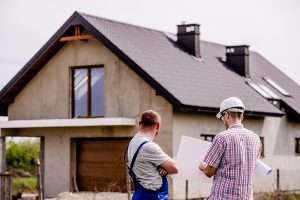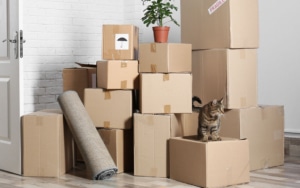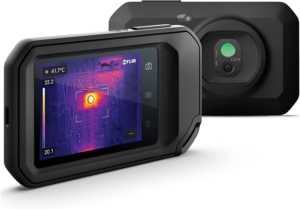Pool Pump Problems 101: Common Issues
A well-functioning pool pump will help maintain a clean and healthy swimming pool. However, like any mechanical system, pool pumps can encounter various issues that hinder their performance. This blog will explore common pool pump problems and provide valuable insights into troubleshooting and resolving these issues. By understanding the common challenges with pool pumps, you can keep your pool water sparkling and your equipment running smoothly.
Importance of a Well-Functioning Pool Pump
A. Role of a Pool Pump in Pool Maintenance
A pool pump serves as the heart of the pool’s circulation system, responsible for moving water through the pool’s filtration system. It helps remove debris, prevents stagnation, and distributes chemicals evenly. Without a properly functioning pump, the pool water can become stagnant, leading to issues such as algae growth, poor water quality, and even damage to pool equipment.
B. Impact of a Malfunctioning Pool Pump
When a pool pump encounters problems, its ability to circulate water effectively is compromised. This can result in several detrimental effects:
1. Inadequate Filtration: Insufficient water circulation hampers the filtration process, allowing debris and contaminants to accumulate in the pool.
2. Algae Growth: Stagnant water provides an ideal breeding ground for algae, leading to green and murky pool water.
3. Chemical Imbalance: Poor water circulation affects the distribution of chemicals, making it challenging to maintain the appropriate chemical balance in the pool.
4. Equipment Damage: A malfunctioning pump can put strain on other pool equipment, potentially leading to premature wear and damage.
Common Pool Pump Issues
- Pump Motor Failure
- Low Flow or Insufficient Water Circulation
- Air Leaks in the Pump System
- Clogged or Blocked Impeller
- Pump Priming Problems
- Leaking or Damaged Pump Seals
- Excessive Noise or Vibration
Now, let’s delve into the most common problems pool owners encounter with their pool pumps and explore effective solutions for each.
Pump Motor Failure
The pool pump motor is the powerhouse behind its operation. Unfortunately, motor failures can occur due to various reasons, such as:
1. Overheating: Excessive heat can cause motor components to deteriorate, leading to motor failure.
2. Electrical Issues: Power surges, faulty wiring, or electrical malfunctions can damage the motor.
3. Age and Wear: With time, the motor’s internal components may degrade, eventually resulting in failure.
If you notice signs of motor failure, such as a humming sound or the motor not starting, there are a few troubleshooting steps you can take:
1. Check Power Supply: Ensure that the pump is receiving the correct power supply and that there are no electrical issues.
2. Inspect Capacitors: Faulty capacitors can prevent the motor from starting. Look for signs of swelling or leakage and replace if necessary.
3. Seek Professional Help: If basic troubleshooting doesn’t resolve the issue, it’s advisable to consult a professional pool technician for motor repair or replacement.
Low Flow or Insufficient Water Circulation
Insufficient water flow can stem from various factors, including:
1. Clogged or Blocked Skimmer Baskets: Debris accumulation in skimmer baskets can obstruct water flow, affecting pump performance.
2. Clogged Filter: A dirty or clogged filter restricts water flow, diminishing the pump’s efficiency.
3. Closed Valves: Ensure that all valves in the pool’s plumbing system are fully open to allow maximum water circulation.
To address low flow issues, follow these troubleshooting steps:
1. Clean Skimmer Baskets and Strainer Pot: Remove debris from the skimmer baskets and strainer pot to ensure unobstructed water flow.
2. Clean or Replace the Filter: Regularly clean or backwash your pool filter to remove accumulated debris. If the filter is damaged or excessively dirty, consider replacing it.
3. Check Plumbing Connections: Inspect the plumbing connections for any leaks or blockages that may restrict water flow. Clear any obstructions found.
Air Leaks in the Pump System
Air leaks can disrupt the pump’s ability to create a strong suction and impede water circulation. Common causes of air leaks include:
1. Loose or Damaged Pump Lid: A loose or cracked pump lid can introduce air into the system.
2. Leaky Pipe Connections: Loose fittings or damaged pipe connections can allow air to enter the pump system.
3. Worn Shaft Seal: A worn-out shaft seal can cause air to be drawn into the pump, resulting in air leaks.
To detect and fix air leaks, follow these steps:
1. Check Pump Lid and O-ring: Ensure the pump lid is securely tightened and the O-ring is intact. Replace the O-ring if it shows signs of wear or damage.
2. Inspect Pipe Connections: Check all pipe connections and fittings for leaks. Use appropriate sealants or replace faulty components as needed.
3. Replace Worn Shaft Seal: If the shaft seal is worn, it’s advisable to replace it. Consult a professional pool technician for assistance if necessary.
Clogged or Blocked Impeller
The impeller is a critical component responsible for water movement within the pump. Clogs or blockages can hamper its operation, leading to reduced water flow. Common causes of impeller clogs include:
1. Accumulated Debris: Small objects, leaves, or debris can get lodged in the impeller, impeding its rotation.
2. Mineral Deposits: Over time, mineral deposits can accumulate on the impeller, restricting its movement.
To address a clogged or blocked impeller, follow these steps:
1. Turn off the Pump: Always switch off the pump and disconnect the power before performing any maintenance.
2. Access the Impeller: Depending on your pump model, you may need to remove the pump housing or unscrew the impeller cover to access it.
3. Clean the Impeller: Carefully remove any debris or mineral deposits from the impeller using a soft brush or compressed air. Ensure it rotates freely.
4. Reassemble the Pump: Once the impeller is clean, reassemble the pump, ensuring all components are securely fastened.
Pump Priming Problems
Priming is the process of removing air from the pump and creating a vacuum to facilitate water flow. Priming issues can arise due to various reasons, such as:
1. Air Leaks: Air leaks in the pump system prevent proper priming, leading to reduced water circulation.
2. Insufficient Water Level: If the pool water level is too low, the pump may struggle to prime.
To troubleshoot and resolve pump priming problems, consider the following steps:
1. Check for Air Leaks: Inspect the pump system for any air leaks as discussed earlier. Fix any leaks identified.
2. Adjust Water Level: Ensure the pool water level is at the appropriate height to facilitate proper priming. If necessary, add water to achieve the optimal level.
3. Prime the Pump Manually: If the pump fails to prime automatically, try priming it manually. Consult your pump’s manufacturer instructions for specific priming instructions.
Leaking or Damaged Pump Seals
Pump seals prevent water from leaking out of the pump housing. Over time, seals can deteriorate or become damaged, leading to leaks. Common causes of pump seal leaks include:
1. Age and Wear: Like any other component, pump seals degrade over time, resulting in leaks.
2. Excessive Pressure: High pressure within the pump system can cause the seals to fail.
To address leaking pump seals, consider the following steps:
1. Identify the Source of the Leak: Inspect the pump housing and connections to determine the exact location of the leak.
2. Replace the Seal: If the pump seal is damaged or worn, it’s necessary to replace it. Consult a professional pool technician for assistance with seal replacement.
Excessive Noise or Vibration
Excessive noise or vibration from the pool pump can indicate underlying issues. Common causes include:
1. Misaligned Motor or Impeller: A misaligned motor or impeller can cause excessive noise and vibration during operation.
2. Loose or Damaged Components: Loose fittings, worn-out bearings, or damaged components can contribute to noise and vibration.
To reduce noise and vibration from the pool pump, follow these steps:
1. Check Alignment: Ensure the motor and impeller are properly aligned. Adjust as necessary.
2. Tighten Loose Components: Inspect all fittings and connections, tightening any loose components.
3. Replace Worn-Out Bearings: If worn-out bearings are the source of the noise, consider replacing them. Consult a professional if needed.
Preventive Maintenance and Troubleshooting Tips
Regular preventive maintenance can help mitigate pool pump problems. Consider the following tips:
1. Regularly Clean Skimmer Baskets and Strainer Pot: Remove debris from the skimmer baskets and strainer pot to prevent clogs and improve water flow.
2. Clean or Replace the Filter: Clean or backwash the pool filter regularly to ensure optimal filtration.
3. Maintain Adequate Water Level: Keep the pool water level within the recommended range to facilitate proper pump operation.
4. Schedule Professional Inspections: Periodically consult a professional pool technician to inspect and maintain your pool pump, ensuring optimal performance.
Here are the top 10 frequently asked questions about common pool pump problems, along with their answers:
1. Q: Why is my pool pump not turning on?
A: There could be several reasons for a pool pump not turning on, including a tripped breaker, faulty wiring, or a malfunctioning motor. Check the power supply, reset the breaker, and if the issue persists, consult a professional for further inspection and repair.
2. Q: How often should I clean or replace my pool pump filter?
A: The frequency of cleaning or replacing your pool pump filter depends on factors such as pool usage, debris levels, and the type of filter. As a general guideline, it’s recommended to clean or backwash the filter every 1-2 weeks and replace it every 1-2 years.
3. Q: What causes my pool pump to lose prime?
A: Pool pump priming issues can arise due to air leaks in the pump system, low water levels, or clogged suction lines. Inspect for air leaks, ensure proper water level, and check for clogs to resolve priming problems.
4. Q: Why is my pool pump making loud noises?
A: Loud noises from the pool pump can indicate issues such as misalignment, worn-out bearings, or debris in the impeller. Check for misalignment, tighten loose components, and clean the impeller to reduce noise. If the issue persists, consider replacing worn-out bearings.
5. Q: How can I prevent my pool pump from overheating?
A: To prevent pool pump overheating, ensure proper ventilation around the pump, avoid running the pump for extended periods, and maintain a clean impeller and filter. Regular maintenance and keeping the pump well-maintained will help prevent overheating.
6. Q: Why is my pool pump not circulating water properly?
A: Insufficient water circulation can occur due to clogged skimmer baskets, a dirty filter, closed valves, or a malfunctioning pump motor. Clean skimmer baskets, backwash the filter, open valves, and check the motor for any issues to improve water circulation.
7. Q: How do I fix a leaking pool pump?
A: Pool pump leaks can be caused by damaged seals, loose connections, or cracks in the pump housing. Identify the source of the leak, replace damaged seals, tighten loose connections, and consider professional assistance for complex repairs.
8. Q: Can I repair a pool pump motor myself?
A: While basic troubleshooting like checking power supply or resetting the breaker can be done by pool owners, repairing a pool pump motor is best left to professionals. Motors require specialized knowledge and tools to ensure safe and effective repairs.
9. Q: What should I do if my pool pump motor fails?
A: If your pool pump motor fails, contact a professional pool technician for an assessment. They can determine if the motor can be repaired or needs to be replaced. Attempting to repair the motor yourself can lead to further damage or safety hazards.
10. Q: How can I prevent air leaks in my pool pump system?
A: To prevent air leaks, regularly inspect and maintain the pump lid and O-ring, ensure tight fittings and connections, and use proper lubrication on seals. Taking these preventive measures will help minimize the chances of air leaks in the pump system.
Remember, if you have specific concerns or encounter complex issues with your pool pump, it’s always recommended to consult a professional pool technician for expert advice and assistance.
Understanding common pool pump problems empowers pool owners to troubleshoot and resolve issues promptly. You can keep your pool pump in excellent working condition by addressing motor failure, low flow, air leaks, clogged impellers, pump priming problems, leaking seals, excessive noise, and vibrations. Remember to practice preventive maintenance and seek professional assistance to ensure a clean, healthy, and enjoyable swimming experience.









